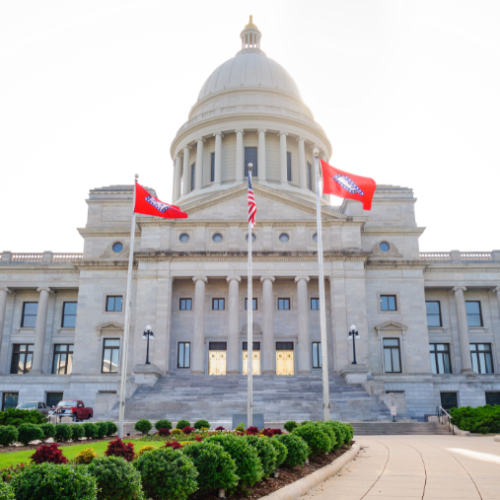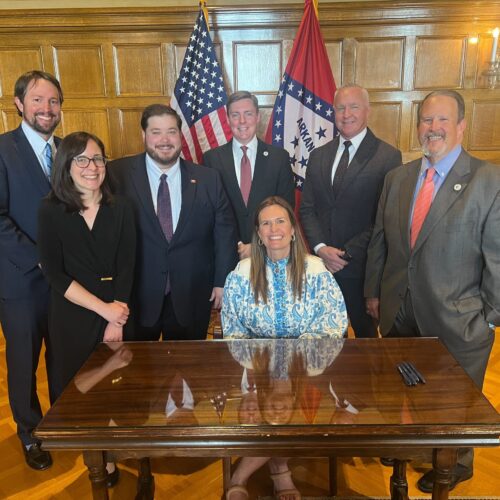
Explainer: Minnesota’s Justice Reinvestment Legislation Results in $43.6 Million Annual Increase in Community Supervision System
In May 2023, Minnesota Governor Tim Walz signed a sweeping public safety omnibus bill into law, which is designed to increase public safety and improve community supervision.
Contained within the bill are policy changes that were informed by Minnesota’s Justice Reinvestment Initiative, which the state embarked on in 2021 with technical support from experts at The Council of State Governments (CSG) Justice Center and support from the U.S. Department of Justice’s Office of Justice Programs’ Bureau of Justice Assistance and The Pew Charitable Trusts. Here’s what you need to know:
1. Why is this legislation needed?
Minnesota has one of the lowest incarceration rates in the country, instead relying heavily on community supervision. The state has the nation’s fifth-highest rate of people on probation, with 2 in every 100 adults in the state on probation as of 2018. Despite Minnesota’s heavy reliance on supervision over incarceration, the state has historically underinvested in community supervision, leading to a lack of specialized training and quality assurance practices, as well as insufficient community-based risk-reduction programming. Inconsistencies in tools, practices, resources, and outcome measurement also negatively impact supervision effectiveness statewide.
Three key challenges were identified in Minnesota:
- Funding across delivery systems, counties, and Tribes was not effective or equitable. As a result, counties disproportionately carry responsibility for supervision funding leaving local agencies without the resources to consistently implement evidence-based practices and meet the needs of individuals on supervision. Inconsistencies in risk and need assessment, the use of incentives and sanctions, and supervision outcome measurement also adversely impact supervision effectiveness across the state and hinder Minnesota’s ability to target the underlying drivers of crime and recidivism. With these root cause issues unaddressed, costs can rise while public safety benefits go unrealized.
- Black and Native American people are overrepresented in Minnesota’s probation and prison systems. The rate of Black adults on felony probation in 2019 was nearly 5 times higher than that of White adults on felony probation. For Native Americans, this rate was more than 9 times higher than for White adults. Native Americans on probation have higher revocation rates than other racial and ethnic groups for all offense types. While the revocation rate for people on probation for property offenses who are non-Native American is, on average, 12 percent, the rate for Native Americans is almost double, at 23 percent. This disparity suggests that the community supervision system is disproportionately failing to meet the needs of Black and Native American individuals.
- Probation violations and supervised release returns account for nearly two-thirds of prison admissions. In 2019, approximately 23 percent of prison admissions were the result of probation violations.
2. What will the legislation do?
SF 2909 contains numerous public safety provisions including many community supervision reforms that emerged from the JRI process:
- Minnesota administers community corrections through three delivery systems, which historically has led to inconsistent, unpredictable funding. This law creates a new funding formula to ensure that all counties and Tribal Nations across the state receive stable, equitable funding for community corrections. As part of the new funding formula, the state will increase its annual investment in community supervision by $43.6 million. This much-needed, transformative increase will empower counties and Tribes to make supervision decisions based on local public safety and community needs and ensure that all necessary services are appropriately funded. The new autonomy given to Tribes presents an opportunity to address some of the underlying issues leading to disparate outcomes for Native American people under supervision.
- The law establishes a Community Supervision Advisory Committee whose scope of work will include developing statewide consistency related to supervision standards and definitions, risk and needs assessment tools, an incentives and sanctions grid, case plans, performance indicators for supervision success, and a statewide training and quality assurance system overseen by an evidence-based practices coordinator. These changes will ensure that Minnesota’s community corrections system is rooted in evidence-based best practices that will enhance public safety.
- The committee will also provide recommendations regarding narrowly tailoring supervision conditions to an individual’s needs, providing gender-responsive, culturally appropriate services and trauma-informed approaches, devising a plan to eliminate the financial penalty incurred by a jurisdiction upon successful discharge of an individual from supervision, and establishing a state-level Community Supervision Advisory Board. These changes will allow Minnesota to better address drivers of crime and recidivism and enable communities that have been disproportionately impacted by scarce and inadequate resources to tailor supervision to the specific, historically unmet needs of their population.
3. How was the legislation developed?
In the spring of 2021, Minnesota state leaders began using a Justice Reinvestment approach to address the state’s criminal justice system challenges with intensive technical assistance from the CSG Justice Center.
The Governor’s Council on Justice Reinvestment—a bipartisan, interbranch committee created through Executive Order 21-34—and the Delivery System Standards and Funding Policy Working Group—a committee established in House Filing (HF) 63 to update the state’s supervision funding formula—oversaw the project.
Under their direction, CSG Justice Center staff analyzed case-level sentencing, probation, and prison data to learn more about criminal justice trends and outcomes in the state. CSG Justice Center staff also convened focus groups, conducted assessments, and interviewed key stakeholders in Minnesota’s criminal justice system. Based on the findings from these quantitative and qualitative analyses, the Governor’s Council on Justice Reinvestment and the Delivery System Standards and Funding Policy Working Group developed policy options aimed at strengthening the state’s criminal justice system, improving the outcomes of people on community supervision, and ensuring equitable distribution of resources across the state.
Though the bill that contained these recommendations did not pass in the 2022 legislative session, the recommendations were re-introduced in the 2023 session, when they were passed as part of a larger public safety package.
Photo by Bao Chau on Unsplash.
This project was supported by Grant No. 2019-ZB-BX-K002 awarded by the Bureau of Justice Assistance. The Bureau of Justice Assistance is a component of the Department of Justice’s Office of Justice Programs, which also includes the Bureau of Justice Statistics, the National Institute of Justice, the Office of Juvenile Justice and Delinquency Prevention, the Office for Victims of Crime, and the SMART Office. Points of view or opinions in this document are those of the author and do not necessarily represent the official position or policies of the U.S. Department of Justice.

Arkansas policymakers have long expressed concerns about the state’s high recidivism rate. Over the past 10 years, an…
Read MoreIn April 2025, Arkansas Governor Sarah Huckabee Sanders signed a package of bipartisan criminal justice legislation into law,…
Read More Explainer: Key Findings and Options from Arkansas’s Justice Reinvestment Initiative
Explainer: Key Findings and Options from Arkansas’s Justice Reinvestment Initiative
Arkansas policymakers have long expressed concerns about the state’s high recidivism rate. Over the past 10 years, an estimated 72 percent of prison admissions in the state involved people who were revoked from supervision, with unmet substance use and mental health challenges playing a significant role in these failures.
Read More Explainer: How a New Law in Arkansas Tackles Crime, Recidivism, and Community Supervision Challenges
Explainer: How a New Law in Arkansas Tackles Crime, Recidivism, and Community Supervision Challenges
In April 2025, Arkansas Governor Sarah Huckabee Sanders signed a package of bipartisan criminal justice legislation into law, which is designed to increase public safety and improve community supervision. The legislation passed nearly unanimously.
Read More









